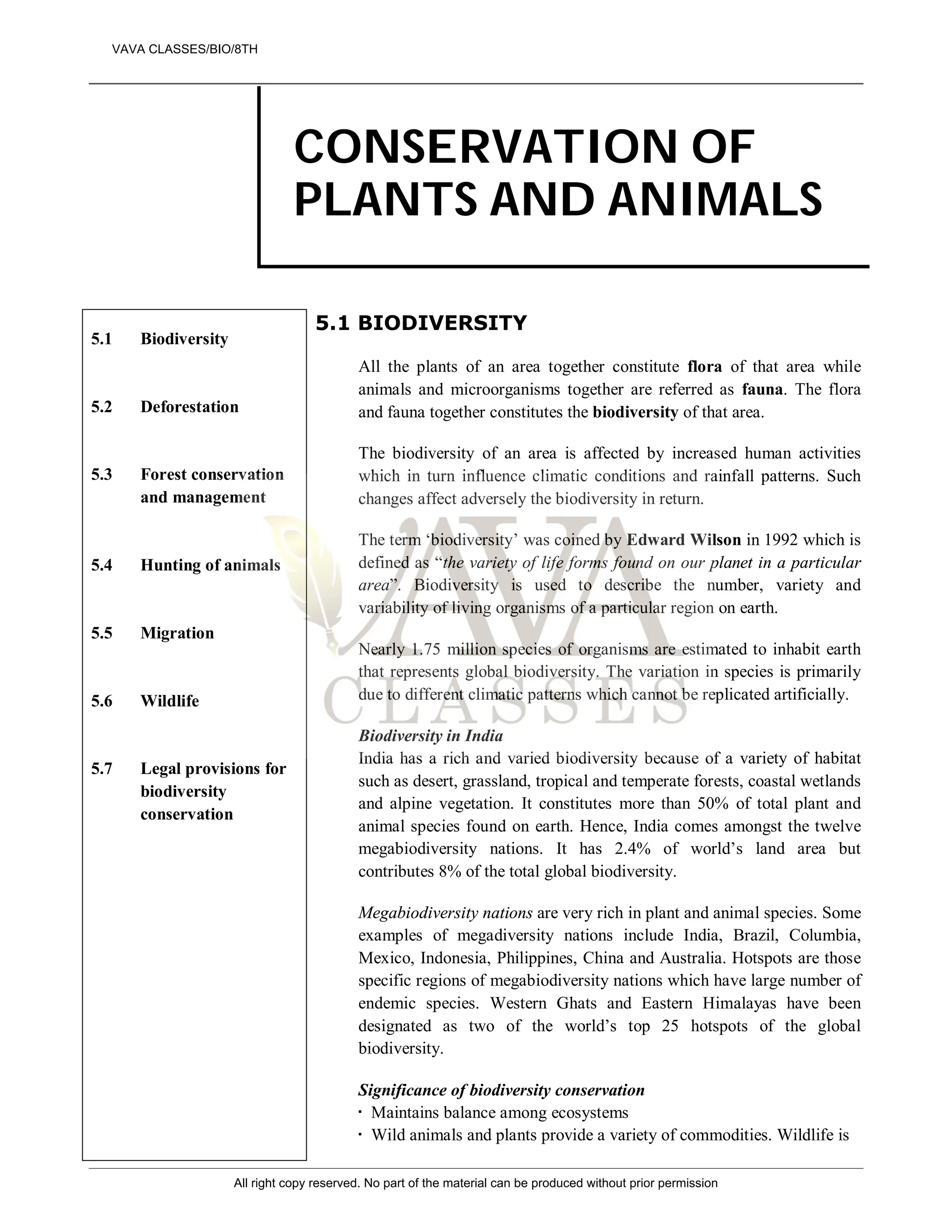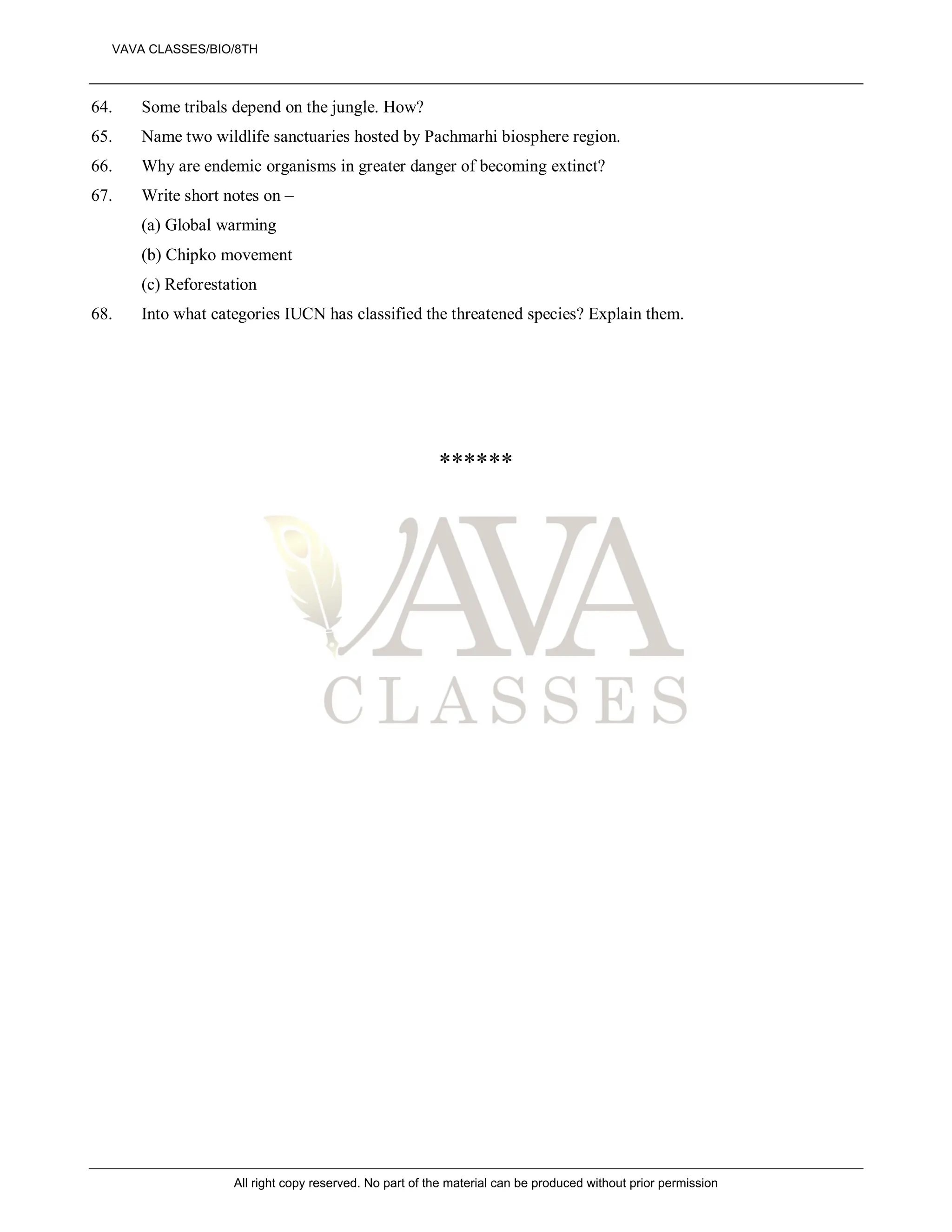The document discusses biodiversity, conservation, and the threats facing plant and animal species due to human activities like deforestation, pollution, and hunting. India is highlighted as a megabiodiversity nation, hosting over 50% of the world's biodiversity, yet it faces significant environmental challenges that impact ecosystems. Conservation strategies such as forest management and the establishment of protected areas are emphasized as essential for maintaining ecological balance and protecting endangered species.



















